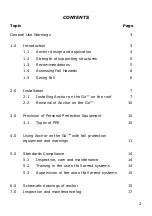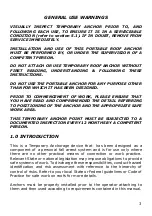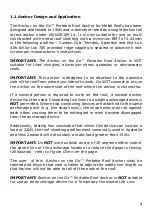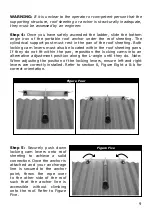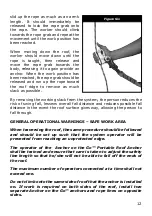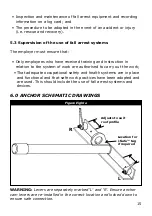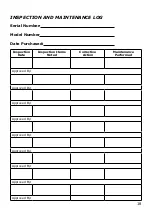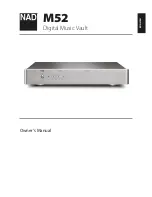
Step 6: Return to the ground and walk to the other side of the roof and
connect the rope grab on the anchorage line to the fall arrest connection
point on your full body harness. Capital Safety always recommends that
a shock absorber be used between the rope grab and the connection
point to reduce the risk of injury in a fall.
NOTE: A second Anchor on the Go™ device can be installed on the
opposite side of the roof to enable the operator to work on both sides of
the roof and be connected between them with two separate rope lines.
This is called Restraint Technique.
2.2 Removal of Anchor on the Go™
After descending the roof from the access side and disconnecting from
the anchor line, then climb the ladder you have placed (safely) close to
the temporarily installed anchor and simply reverse the process used for
installation.
3.0 PROVISION OF PPE
Before commencing work on roofs, the contractors doing the work should
assess all foreseeable conditions likely to affect the health and safety of
the employees or themselves, as identified during the risk assessment
procedure, and arrange for the provision and use of appropriate Personal
Protective Equipment (PPE). If alternative means of access can be
arranged safely without the need for PPE, these methods should be
adopted first if deemed practical.
3.1 Types of PPE
The following are examples of PPE often associated with roof work.
Appropriate PPE, whether listed below or not, should be provided when
required:
• Fall arrest equipment should be selected to protect the wearer and
allow them access to the areas they need to work, maintaining
freedom of movement and be comfortable;
• Footwear to reduce the risk of falls resulting from slips - rubber soled
shoes with herring bone or similar nonslip tread pattern are commonly
selected;
• Eye protection to reduce the risk of eye injury - eye protection
10


